Sun's out and you fancy a stroll around some highly manicured lawns, complete with water features, woodlands and decades-old trees? Look no further than the stately home gardens of the UK.
Plus, many are dog-friendly stately homes, so you're even allowed to bring your pup along for the day.
The best stately home gardens to visit in the UK
Mount Stewart, County Down
During the 18th and 19th centuries, the aggrandisement of an earlier Georgian house by a potent political dynasty, the Marquesses of Londonderry, went hand in hand with the expansion of the grounds.
Politics took over the garden too, with prominent figures depicted as dodos, monkeys and other cartoonists’ delights strutting their stuff on bridges and outdoor buildings.
But there is much more to the garden than a mere flexing of political muscle: the trees and shrubs make up a collection that is not only remarkable for its variety and maturity, but also for the sensitive way they are positioned in the landscape and attractively underplanted.
Of the formal garden rooms, the Italian Garden is densely planted and satisfyingly ornate; on the wilder side a white stag stands poised for flight in a meadow setting backed by silver birches. Look out too for James ‘Athenian’ Stuart’s ravishing banqueting hall of 1782-5 and Tir N’an Og, the family burial ground.
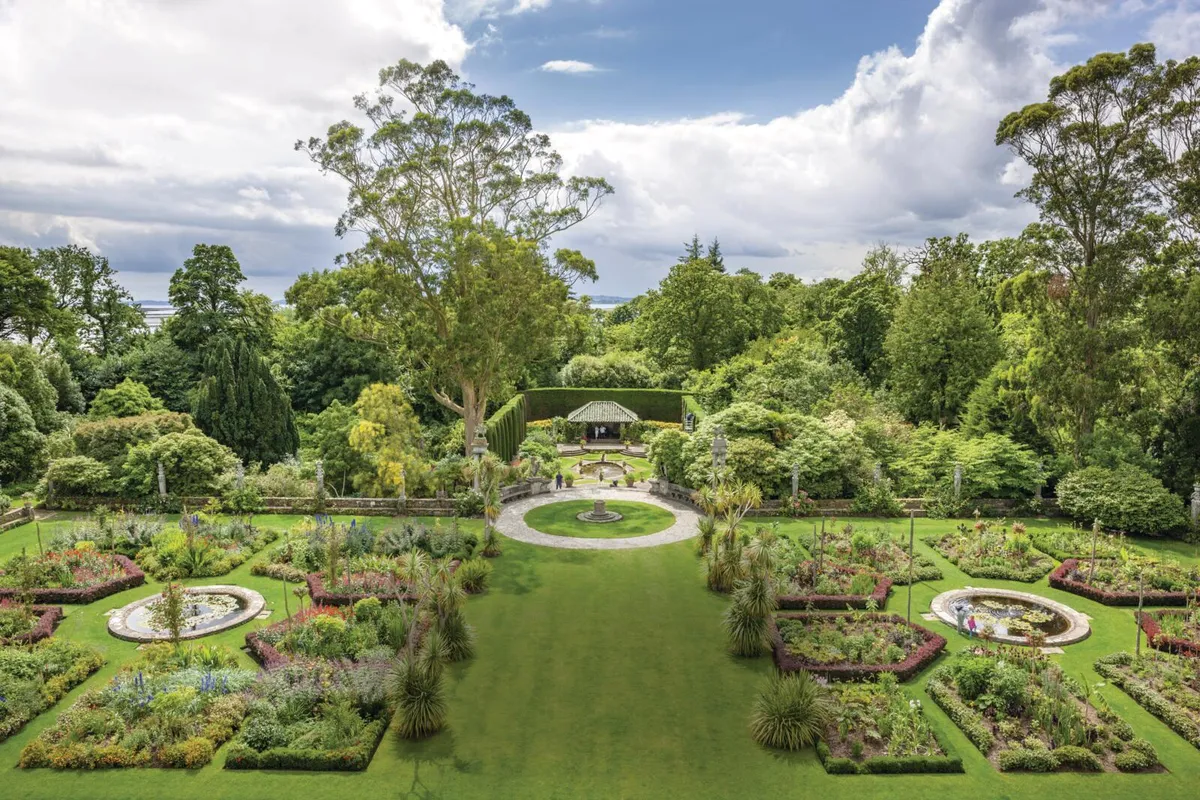
Landform Ueda, Edinburgh
Remember the iconic V&A advertising slogan of 30 years ago – ‘An ace caff with quite a nice museum attached’? Something similar could be said of the Scottish National Gallery of Modern Art in Edinburgh and its supremely satisfying landform design, created by Charles Jencks in 2001.
Inspired by chaos theory and the shapes found in nature, it’s an eye-catcher to end all eye-catchers: a swirling free-form composition, 3,000 metres square, of sculpted pools and ribs of grass contained by aluminium strips.
A spiral path rises to a grassy spine that is terraced on one side and smoothed out on the other. As a come-hither to a public building it has never been bettered – and actually the museum it serves, with its extensive international collection of post-1900 works, is rather more than ‘quite nice’.
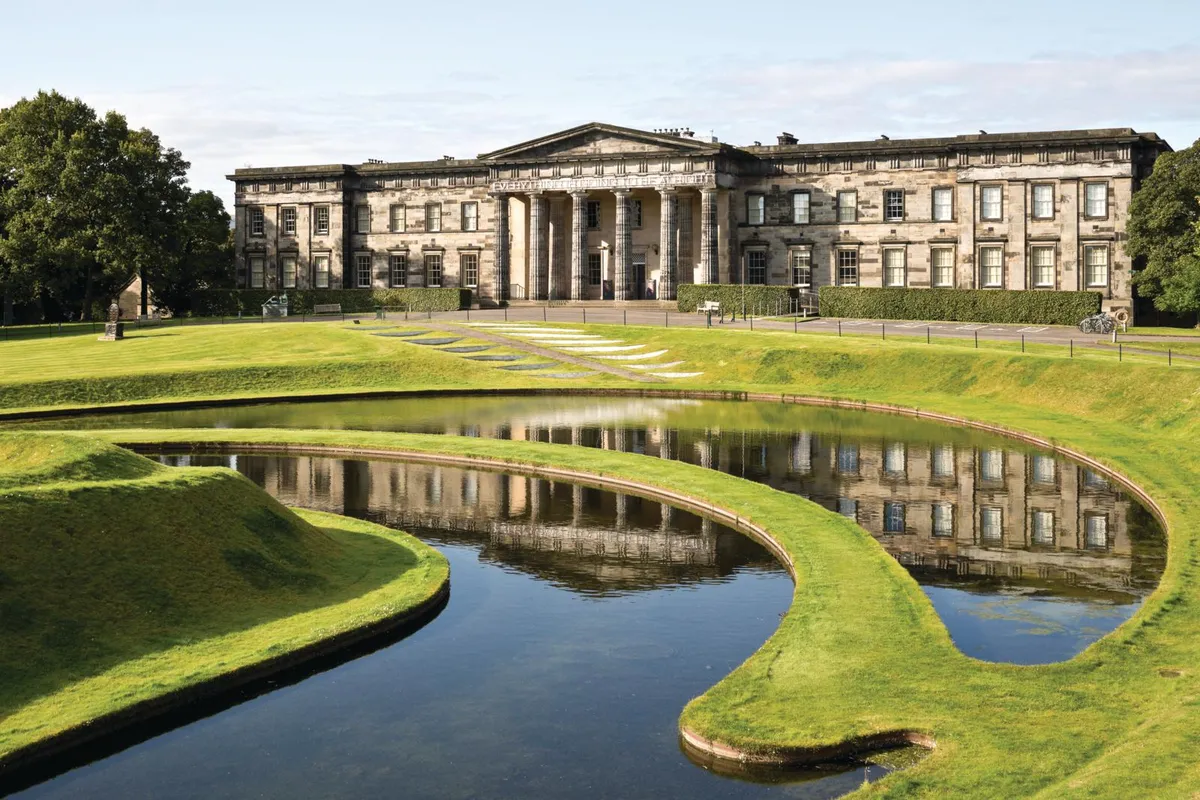
Barrington Court, Somerset
There has been a house on this site, in the picturesque village of Barrington on the edge of the Somerset levels, since Domesday, but the survival of the 16th-century court and its imposing 17th-century stable block, Strode House, is something of a miracle.
When the National Trust, in partnership with the Lyle family (of Golden Syrup fame), took it on in 1907 it was all but derelict, with owls hooting in the rafters and pigs and cattle pressing against the windows.
In 1917 Arthur Lyle commissioned J E Forbes to lay out to the west of the buildings a five-acre mosaic of formal gardens and a substantial walled kitchen garden, creating the ideal estate. The aged, nearly blind but still redoubtable Gertrude Jekyll, with the aid of Barrington soil sent to her in biscuit tins, supplied planting plans for the Lily Garden, the Rose and Iris Garden and the White Garden.
The kitchen garden is filled with flowers as well as produce, and in autumn the cider orchards on three sides of the court carry their cargo of over 100 varieties of local and heritage apples.
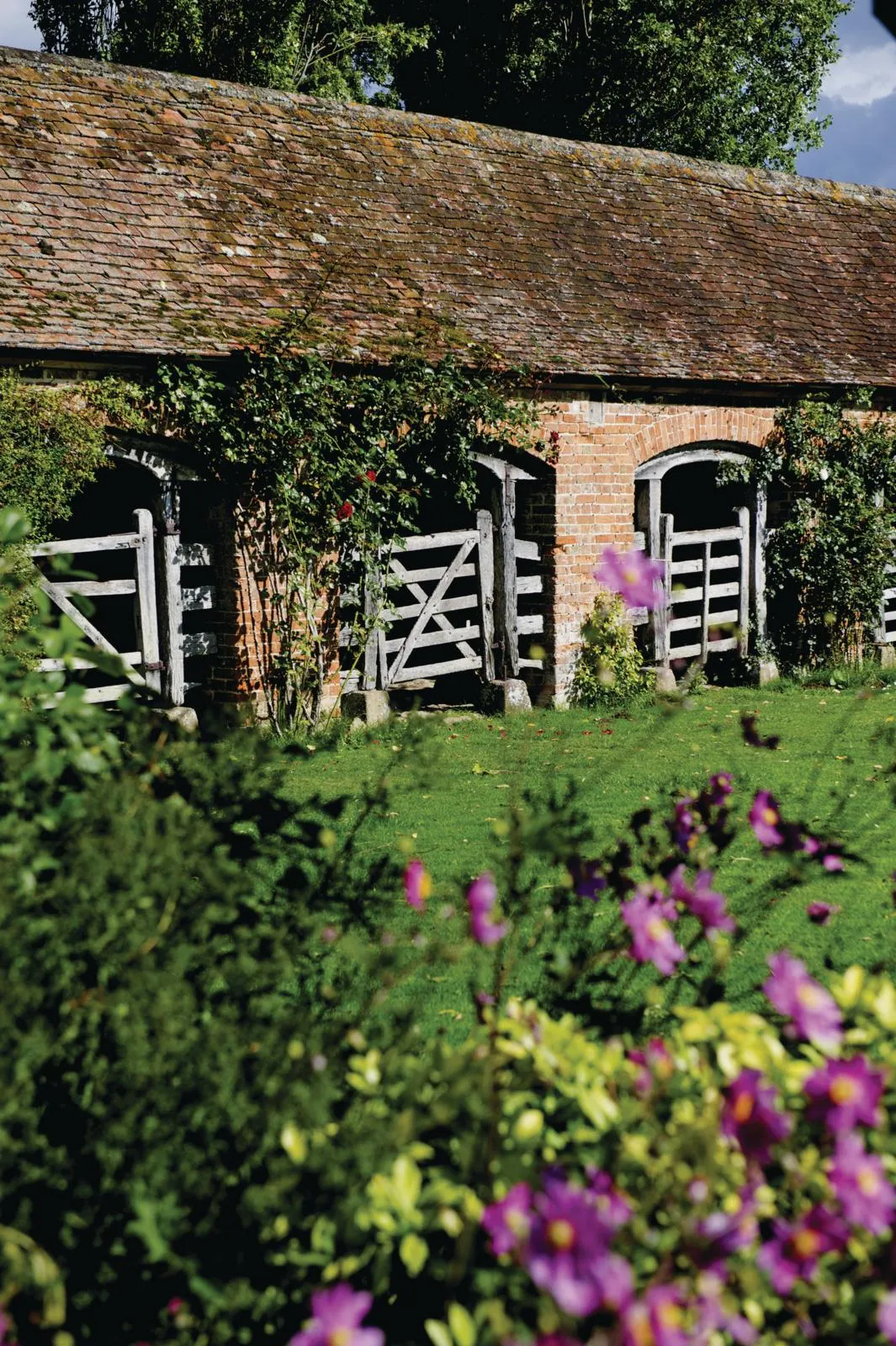
Scampston Hall, North Yorkshire
The 80 acres of gardens and park have a champion pedigree, laid out by Charles Bridgeman and ‘Capability’ Brown. But it is the way Dutch landscape designer Piet Oudolf has choreographed the derelict 4.5-acre walled garden that really takes the breath away today. Make first for the Mount, a flat-topped grass pyramid set among rows of flowering cherry trees, and survey the tapestry of framed spaces below.
A perennial meadow in the centre of the garden is the most pointilliste of the plantings, for the overall design relies on a structure of boldly monochrome arrangements, with each space making a dramatic statement through repetition. Pillars, strips or curves of topiary and grasses, and a 500m-long lime walk underplanted with flowering plants ensure the mix and movement are intoxicating.
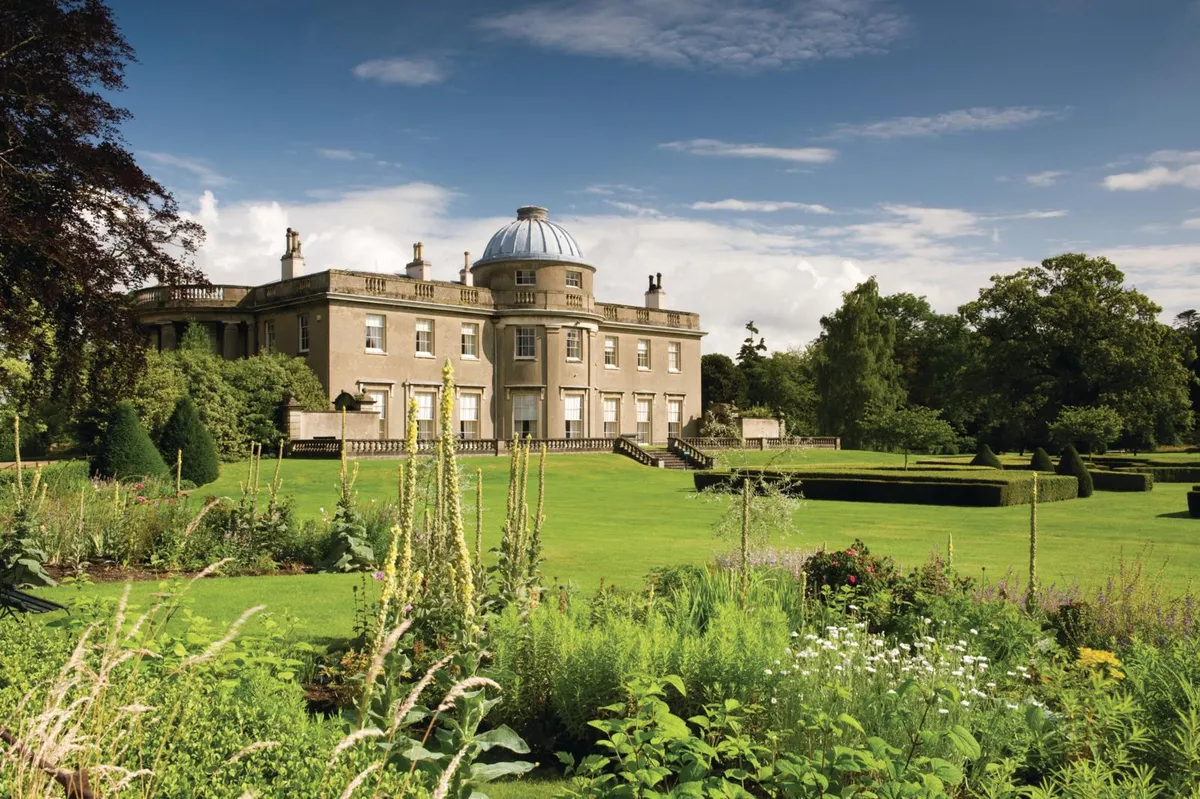
You might also like
Througham Court Garden, Gloucestershire
In this marvellously thoughtful and innovative garden, Christine Facer Hoffman has overlaid and interwoven Norman Jewson’s Arts & Crafts garden with joyful plantings that vary from exuberantly colourful borders to a serenely contemplative grove of black bamboos. This is only half the story, however, for she has embraced Geoffrey Jellicoe’s dictum: ‘A garden should be a voyage for the mind as well as the feet’.
Her own scientifically trained mind became fascinated by the complex patterns found in maths, astronomy and nature, and when she switched careers from medicine to landscape architecture they followed her into the garden, expressed as mind-challenging gates, seats, stone balls and steel hoops. This is science lightly worn, however: the plantings are relaxed, the combinations often unexpected, the effect literally enchanting.
Arresting touches abound: a circular pool and rill made of slivers of blue and purple slates, tall red and purple banners fluttering beyond a grove of white birches, a Portland stone bookshelf in the Library Garden and steps covered in bright red astroturf leading up to a lime walk. You are guaranteed never to be bored.
Tremenheere, Cornwall
In Cornwall the sea is never very far away, but Tremenheere has the additional blessing of a stunning view out to Mount’s Bay and St Michael’s Mount.
It is a most intriguing, perhaps unique site: the 11 acres have been layered by time and man’s activity into a series of broad tranches, with an ancient wooded valley at the bottom of the steeply sloping terrain, a grassy band (farmed from the 1820s) running like a cummerbund along the middle, and a hanging wood of Turkey oaks at the brow of the hill.
Here Neil Armstrong and Jane Martin have masterminded a most exciting large-scale subtropical garden, populated by sculptures and installations by the likes of Kishio Suga, David Nash and James Turrell. The caff is ace too!
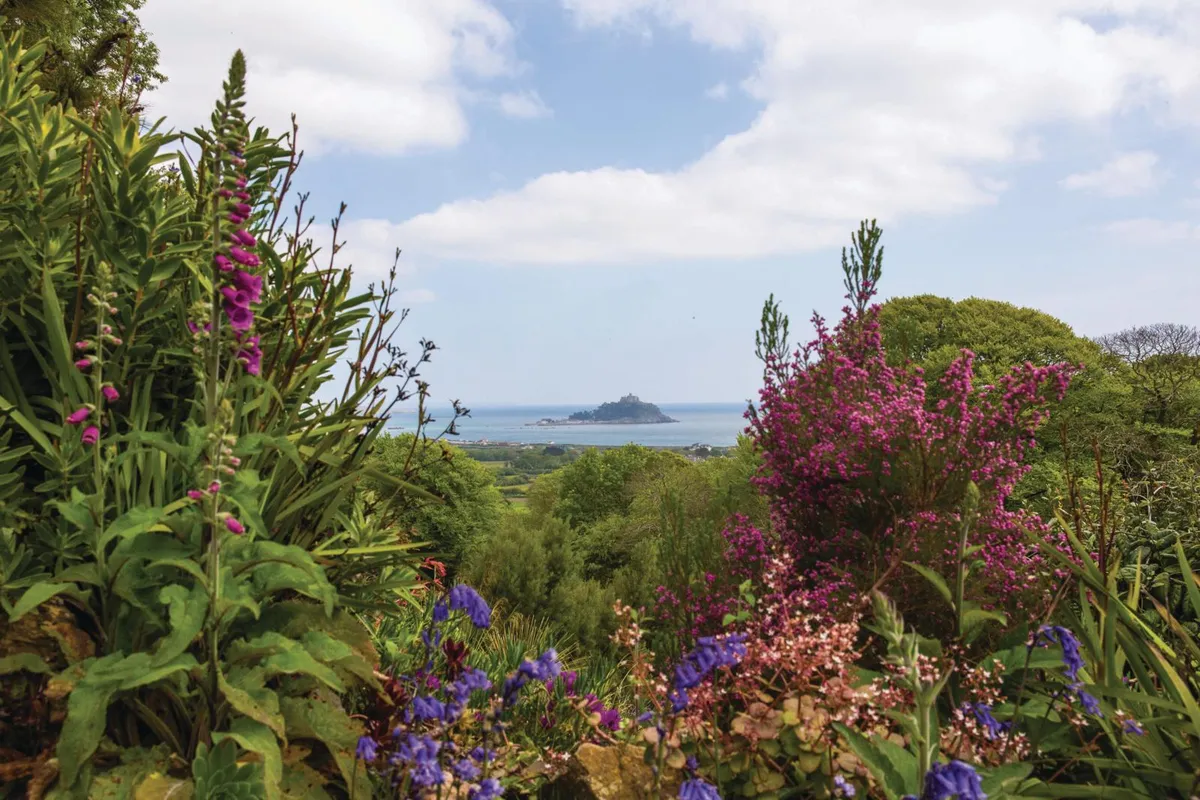
Houghton Hall, Norfolk
Houghton is a swagger house – a Palladian pile designed in the 1720s for George II’s Prime Minister, Robert Walpole, by James Gibbs, Colen Campbell and William Kent. For the whole of the 19th century its future seemed precarious, but the 7th Marquess of Cholmondeley, continuing the rescue of house and park undertaken by his grandparents, planted new avenues and groups of trees to frame the house.
However, his supreme gift to Houghton has been to mastermind a garden of enviable scale and sophistication. The derelict five-acre walled kitchen garden was redesigned in 2003 with the help of Julian and Isabel Bannerman, whose trademark architectural eye-catchers include a rustic temple decorated with antlers and a grotto fountain spouting through giant clam shells.
The scale and subtlety of the planting in the dozen or so different compartments, divided by axial walks, is really phenomenal throughout. There’s only space here for a few appetite-whetters: the sumptuously deep double herbaceous border, the yew-framed rose garden astonishing in its scale and density of planting, and a laburnum garden with a surreal fire-and-water feature by Jeppe Hein.
Lanhydrock, Cornwall
One of the most impressive historic houses in Cornwall, it was built between 1620-1640 for one of the wealthiest men in the country, Sir Richard Robartes. Following a devastating fire, it was rebuilt in 1881, becoming the family home of the Agar-Robartes until 1969.
Set in 1,000 acres of parkland and woodland, the garden features rare shrubs and trees, there’s a splendid courtyard garden and herbaceous borders that look spectacular during the summer months. Follow the 2.5-mile walk (details on the National Trust’s website) to explore the estate, including the famous avenue of beech trees, which were planted in the 19th century, updating a line of sycamore trees that commemorated Parliament’s victory in the Civil War. Some ancient sycamores remain, but it is the beech that plays host to more than 130 lichens, including rare species. nationaltrust.org.uk/lanhydrock
Brodsworth Hall, South Yorkshire
Virtually unchanged since the hall and its gardens were laid out in the 1860s for the Thellusson family and their servants to enjoy, the house is in the Italianate style. It’s a design that was favoured by Queen Victoria and chosen for her family home, Osborne House.
While the house is noted for the Thellussons’ collection of paintings and sculptures, the gardens feature an abundance of fountains, urns and tazzas, as well as classical statuary. The building was restored by English Heritage, who received it in 1990, and extensive research into the garden’s history revealed the costs of creating such a masterpiece back then. In a two-year period, the costs increased from £169 18s in 1861 to £782 15s 2d in 1863.
The grounds, a collection of grand gardens in miniature, include a grotto planted with hundreds of ferns, a shrubbery, ornamental woodland walks and rose garden planted with both wild and native examples. The gardens boast many impressive collections, including geranium, fern, alpine and snowdrop, all of which were introduced by English Heritage. The collection of holly trees dates back to Victorian times. Happily, English Heritage welcomes visitors to bring a picnic when they enjoy the gardens.
Sherborne Castle & Gardens, Dorset
A spectacular home and garden with an illustrious history dating back to the 12th century, which includes several historical figures who have crossed its hallowed bridge. Most notable among them is Sir Walter Raleigh, who acquired the Old Castle in 1592 and, having failed to restore the property to his liking, built the house that stands today.
The grounds are set out over 42acres of gardens with an additional 1,000 acres of magnificent parkland,much of which was landscaped by Capability Brown. His scheme survives, largely unchanged. From1753, Brown installed the lake and cascade, where the valley narrows and the River Yeo forms natural rapids, returning in 1776 to landscape the grounds closer to the house. His later additions include features such as a boat-shaped bed in the Castle Yard and improving views of the lake. Another spectacular feature is the collection of gigantic Cedar of Lebanon trees, Cedrus libani, which were planted c1769 and are sometimes referred to locally as‘Walter Raleigh’s Cedars’,in homage to Sherborne’s most famous owner.
The walk around the 50-acre lake offers spectacular views of the surrounding countryside and parkland. There is also the Dry Walk, described as a ‘hidden gem’, which is a historic path that partly follows the route of the old London Road. sherbornecastle.com
Bodrhyddan Hall, North Wales
Home of Lord Langford and his family for over 500 years, this exquisite Grade I-listed, 17th-century stately residence (built on old foundations) has a mix of formal and informal gardens. They were created by two notable designers: firstly, Inigo Jones, regarded as the first English architect of significance, is thought to have helped with the early 17th-century design. Two centuries later, landscape architect William Andrews Nesfield laid out new gardens creating a Victorian parterre within the 12-acre space.
One of the leading designers of the period, Nesfield was asked to redesign the arboretum at Kew Gardens in 1844 and several of London’s Royal Parks, in addition to working on over 260 estates around the country. Nesfield enjoyed a reputation for creating exceptional terraces and parterres, such as the fine example at Bodrhyddan, which is replanted every summer with combinations including geraniums and ageratum. There are also impressive waterlilies and the gardens are beautiful throughout the year. The sweeping lawns and woodland walk also offer visitors plenty of space to meander. bodrhyddan.co.uk
Arley Hall, Cheshire
The Warburton family has owned the land at Arley since the 12th century. In 1832, Rowland Egerton-Warburton decided to rebuild the house in the fashionable Jacobean style.
The gardens as they are today evolved at around the time the house was completed, and a plan dating from 1846 shows that the gardens have changed very little since. It’s worth making a visit to Arley Hall for its herbaceous borders alone, believed by many to be the first ever created in England. These days, this type of cottage-style border is synonymous with quintessentially English gardens, but before William Robinson introduced the concept of naturalistic planting in his book, The English Flower Garden (published in 1883), formal and constrained displays were the order of the day.
Another highlight of the estateis The Grove, an informal garden surrounded by woodland, begun over 50 years ago by the current owner, Lord Ashbrook, and his mother, which features an impressive collection of over 400 rhododendrons planted alongside ornamental shrubs such as oak, birch, magnolia, prunus, sorbs, malus, kalmia and hydrangea.
Other unmissable features at Arley Hall include the Furlong Walk, the Kitchen Garden, the Scented and Herb Gardens, the Walled Garden and the Wildflower Meadow. arleyhallandgardens.com
Highclere Castle, Berkshire
Needing little introduction,Highclere Castle has a place in the nation’s hearts as the much-loved Downton Abbey in ITV’s drama of the same name.
Seat of the Carnarvon family since 1679, it has illustrious origins. A settlement at Highclere was recorded in the Domesday Book, while the present- day castle was the brainchild of Sir Charles Barry, the architect who designed the Houses of Parliament. The landscape surrounding the castle has an equally fascinating past. Records show that gardens were cultivated on the site as early as the 1200s, and today you can wander around the original Monks’ Garden. In 1218, the Bishop of Winchester planted 61 fruit trees on the land and, while these have since been replaced by climbing roses and penstemons, medlar and pear trees have been trained to climb the old walls.
The spectacular parkland wasdesigned for the 1st Earl of Carnarvon by Capability Brown in 1770. Lord and Lady Gardens Carnarvon have carefully maintained Brown’s vision for the landscape at Highclere. During your visit you will see hundreds of cedar trees, many of which were planted over 200 hundred years ago, some of them grown from seedlings that were given to the 1st Earl.
Other highlights not to be missed include the White Border, the Wood of Goodwill, the Rose Arbour, the Wild Flower Meadow and the Healing Herb Garden, overseen by Lady Carnarvon. highclerecastle.co.uk
Belvoir Castle, Leicestershire
While Belvoir Castle has actually undergone four major reconstructions since its first iteration in 1067, its gardens have undergone a transformation of their own. The original garden plans drawn up by Harold Peto were only recently discovered in the castle's archives, and Belvoir's custodian Emma Manners, Duchess of Rutland took it upon herself to recreate some of these landscaping elements all these years later. In 2013 the Duchess of Rutland began a two-year restoration project on over 500 acres of woodland, and simultaneously found a huge collection of plans for Belvoir Castle that had been drawn up by Capability Brown in 1780. She has aimed to bring these original designs back to life.
If you look carefully, you'll even see two box parterres with the initials 'D' and 'E' in the middle, for 'David' (the 11th and current Duke) and 'Emma' (his wife, the Duchess).
There are also several striking statues by Caius Gabriel Cibber (1630-1700) peppered throughout the gardens.
Other beautiful gardens to visit in the UK
Sarah Raven's Cutting Garden, East Sussex
All gardeners – nervous , jaded and everything in between – should put this inspiring place on their visiting list this summer during one of the open days taking place at selected dates between April and September.
The old farmhouse is superbly positioned with Brightling Beacon as a borrowed eye-catcher in the distance, and the different gardens in two acres are filled with vivid architectural foliage, fizzing with ravishing colour combinations, and imbued with a spirit of change and experiment.
Running the whole gamut of edible, medicinal and floriferous plants, this is a teaching garden on a grand and pain-free scale – the Sarah Raven catalogues brought vividly and fragrantly to life. Plus lunches and teas to linger over, plants and presents to buy and courses to book galore.
Visit Sarah Raven's Cutting Garden
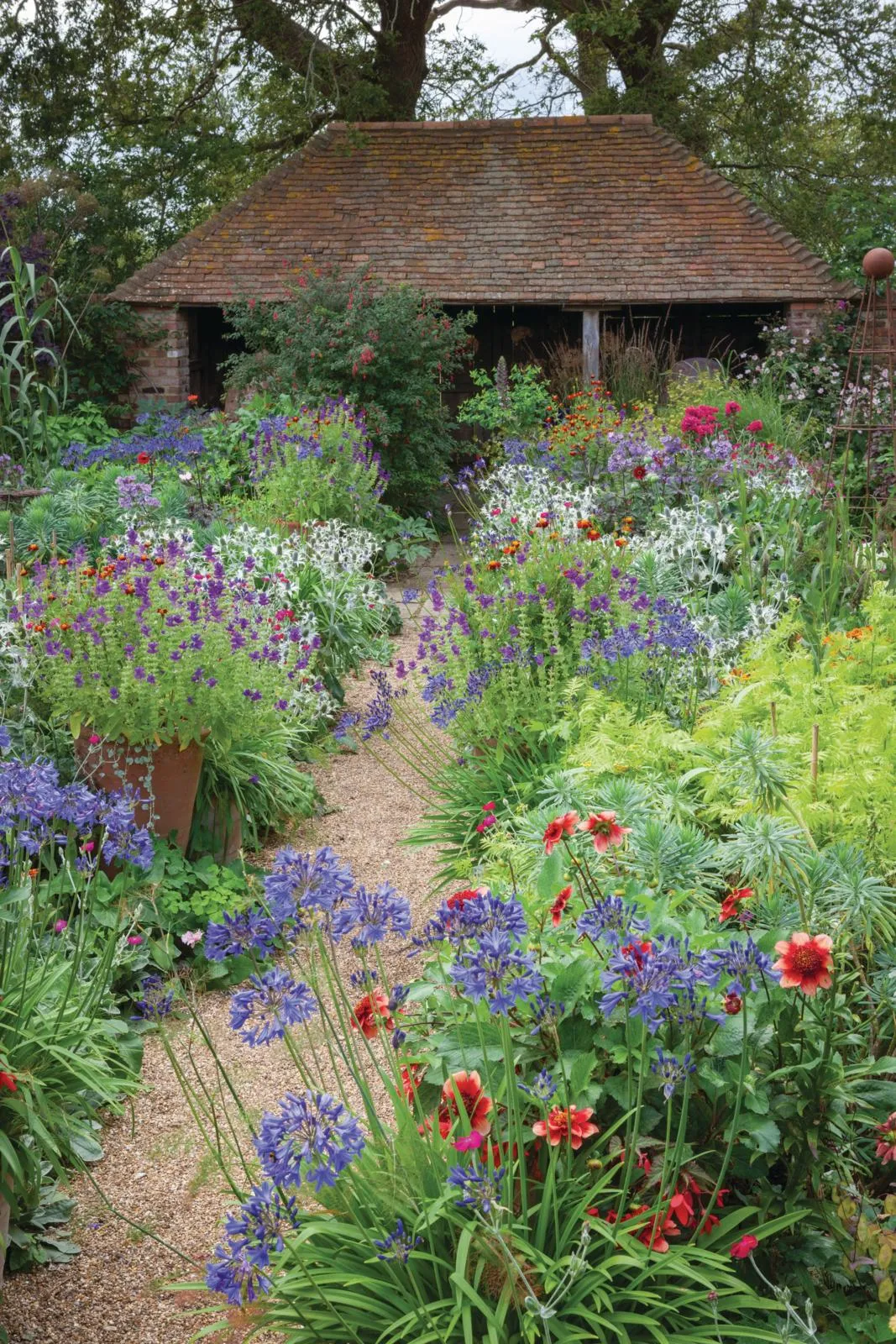
Marks Hall, Essex
Although the hall was demolished in 1950, the 200 acres of gardens and arboretum have developed an important identity of their own. At their heart lies a sloping two-acre garden redesigned by Brita von Schoenaich in 1999.
Enclosed on three sides by 18th-century brick walls, it is blessed with a sheltered microclimate where a dazzling range of unusual and exotic plants flourish. The way patterns have been created with hedges, walls and paving to outline or enclose the cool or fiery plantings adds movement and drama. Oh, and the double border is 525-feet long.
The fourth side opens out on to a lake, and then it’s the turn of the fine collection of often unfamiliar trees in the surrounding arboretum to grab the attention. It’s worth setting aside several hours to explore the woodland walks in the wider landscape too, where wildlife abounds in specially designated habitats. A stimulating and mind-provoking day out for all the family.
